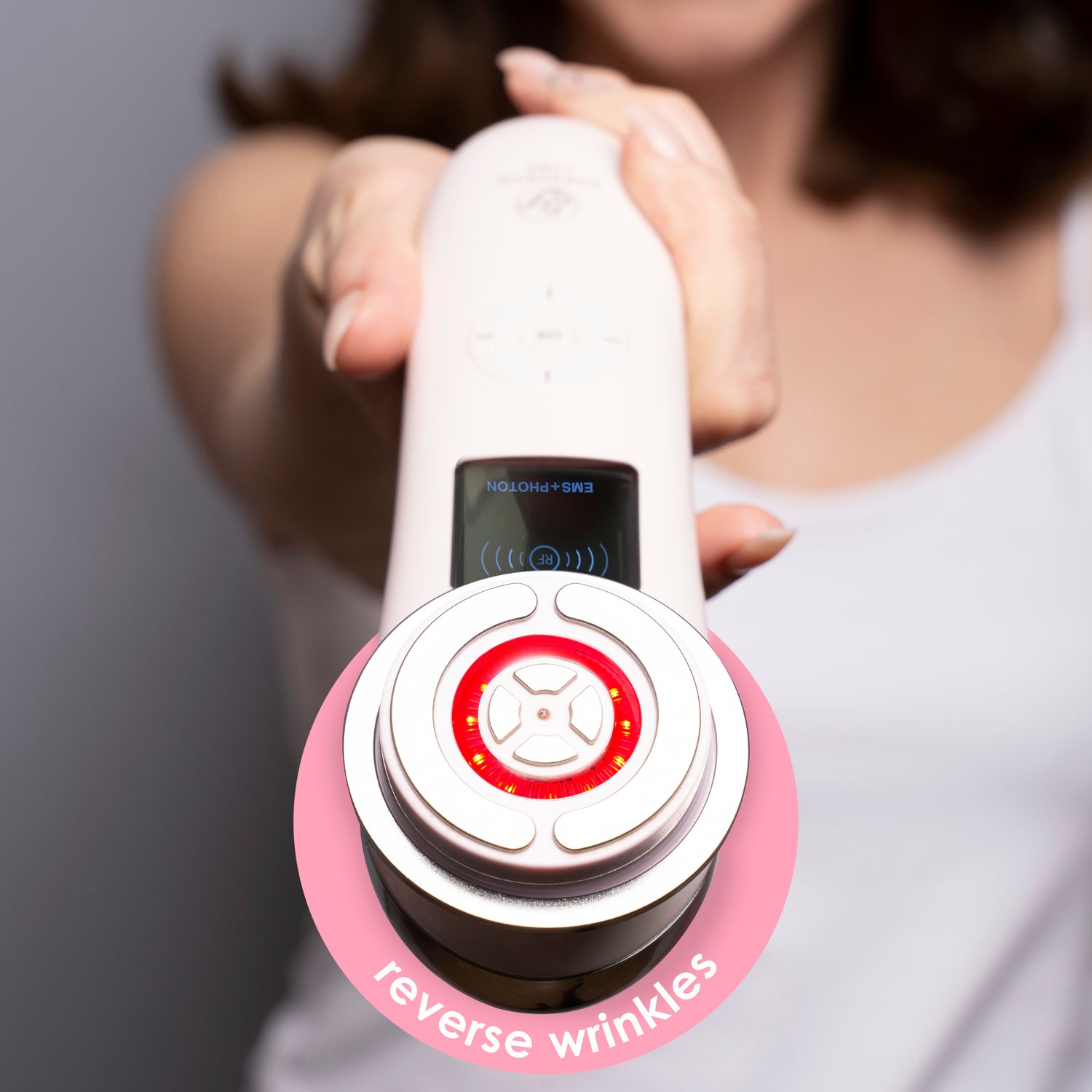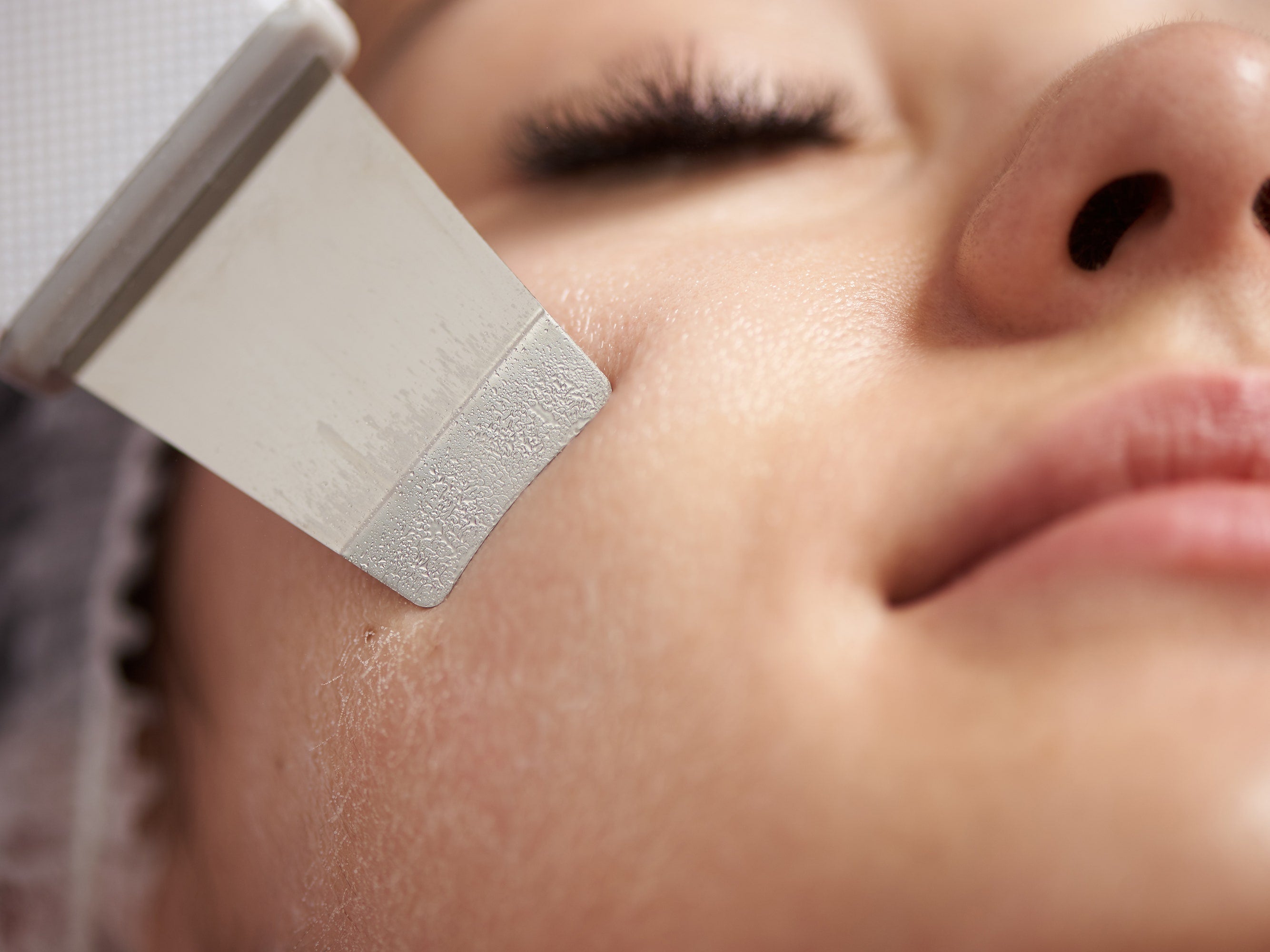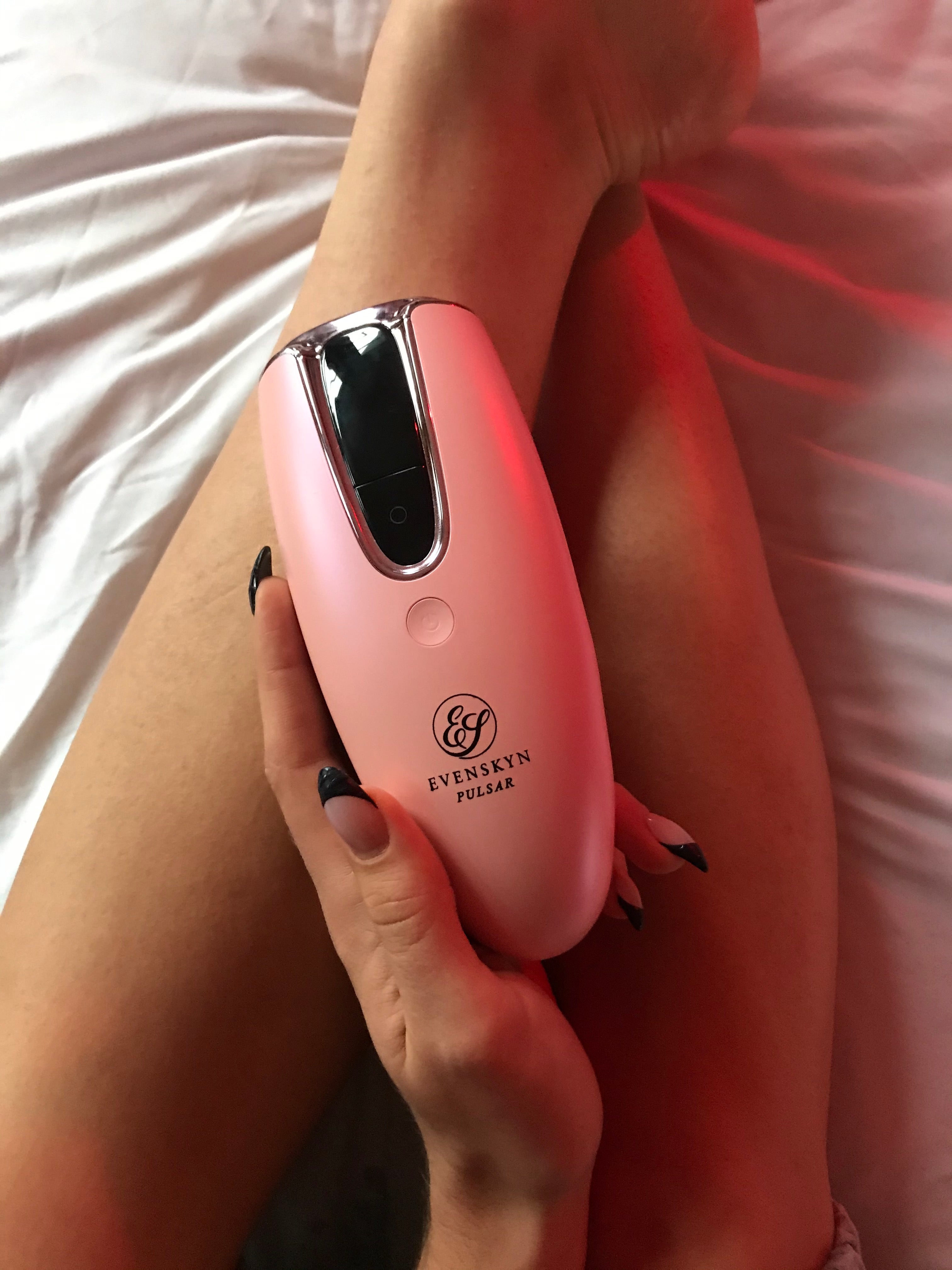Medically Reviewed by Dr. Lisa Hartford, MD
By Shannon Campbell.
Many innovative technologies are being used to reverse the physical signs of aging. Millions of people around the world are looking for anti-aging remedies, and the cosmetic industry is rushing to meet their needs. What’s more, at-home devices are becoming readily available, as more and more people want the efficacy of advanced treatment from the comfort of their homes.
You may have heard of two increasingly popular skin treatments that can now be bought in the form of at-home devices - ultrasound-based skin tightening, and radiofrequency skin tightening - but which is better for treating wrinkles and fine lines?
Below we’re going to compare and contrast these two at-home skincare devices, so you can choose which one works best for your needs.
What are Ultrasound-based Skin Tightening and Radiofrequency-based Skin Tightening?
Both of these treatments have some notable similarities and differences. For example, they both serve the same purpose - to heat the dermis (lower layers of the skin) and target the fibroblast cells that make up our connective tissue.
By doing this, both technologies can stimulate the production of collagen in the body. This extra collagen will rejuvenate the skin, making it look tighter and smoother, as well as brightening the complexion and evening skin tone. But the best part about collagen, when it comes to anti-aging, is its ability to soften and reduce the appearance of wrinkles, fine lines, sagging skin, and age spots.
Ultrasound heats the skin using the same sound wave technology applied through medical ultrasounds, whereas radiofrequency utilizes electromagnetic wavelengths to generate similar heat.
Benefits Of Ultrasound
-
Noticeable results after just one treatment
-
Little to no recovery time
-
Results last longer
Downsides of Ultrasound
-
Temporary redness and swelling after use is likely
-
At-home machines are more expensive
-
The at-home device can be difficult to use, so without expert guidance, guidance results are not always guaranteed.
-
Cannot be used on areas with keloid scars, or by people with body implants
Benefits Of Radiofrequency
-
Easy to operate
-
No recovery time needed
-
Should not be used if you have a pacemaker or other body implant
Downsides of Radiofrequency
-
Several sessions are needed before results can be seen
-
More intermittent treatments are needed to maintain results
It’s undeniable that both of these treatments have been tried and tested by thousands of people in recent years, and are safe and effective methods for preventing signs of aging. The truth is, both ultrasound and radiofrequency skin-tightening are great treatments, and either one may work best for you. It just depends on how you react to them.
However, when it comes to at-home devices there is no competition. Because radiofrequency therapy is a more popular and sought-after aging treatment, more technological developments have been made to establish reliable and fast-acting at-home devices.
Ultrasound at-home devices are comparatively underdeveloped, so they are more expensive and harder to use to achieve maximum results. If you are looking for ultrasound skin-tightening treatment you should always opt for clinical treatment. High-quality radiofrequency devices, on the other hand, are easy to find.
If you want to start out with a multi-faceted radiofrequency therapy device, consider the EvenSkyn® Lumo. This cutting-edge anti-aging and skin tightening machine utilize both radiofrequency and photorejuvenation to combat fine lines, wrinkles, and sagging skin.









Leave a comment
All comments are moderated before being published.
This site is protected by hCaptcha and the hCaptcha Privacy Policy and Terms of Service apply.